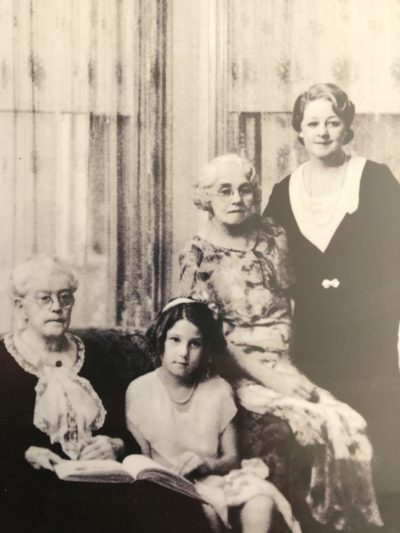
IVINS CITY — Margaret Ashley Stevens Howell was 19 years old when the United States entered World War II.
Now at 97 years old, Howell is still energetic with a quick sense of humor. She has a relaxed demeanor as she makes herself toast with butter and honey in her Ivins City home and recounts memories from nearly 80 years ago.
‘Two arms, two legs and a head’
At the time the war was declared, Howell was living in Los Angeles and attending her first year of junior college.
“The men were gone, and the defense plants needed people. They were looking for help, and they had a place set up where you could go down and be interviewed. I think they just needed two arms, two legs and a head,” she said with a laugh.
After getting a job at the Douglas Aircraft Company in Santa Monica, she worked the swing shift from 3-11 p.m., riveting single-engine fighter planes.

“I’m locally known as ‘Rosie Riveter’ by my friends, as that is what I did,” she said.
The riveting guns at the time were designed like real guns: heavy and made of metal. Oftentimes, riveting was accomplished with two people, she said. One person would work the riveting gun, and the other person held a metal bar against the other side of the panel they were working on, which would flatten the rivet on either side.
After about a year, she was transitioned to a different job where she sat in the cockpit of a fighter airplane, raised off the floor by a dolly, and took hand commands from a technician.
Technicians would be on the ground testing the bomb bay and the wheel doors for proper alignment.
“I ran the gears in the cockpit as they gave me hand signals,” she said. “I loved that job. And I thought afterwards that was as dicey a job as I would have. … I was only going by their hand signals. And I could’ve cut their heads off if I didn’t get my signals right.”
She doesn’t remember how much she got paid for either job, only that they were paid hourly and offered overtime. Most of the workers brought their own lunch, and there was a cafeteria where she and the other workers would eat.

“On Saturdays after work, we’d go out and have a nice dinner,” she said. “We’d go down to the beach of Santa Monica. They had a big ballroom down there, and usually they had pretty good bands.”
During her free time, she did the same types of things people do now, she said, except everything was “upside down.”
Because of the work schedules, most everything would stay open 24/7, Howell said, such as diners and movie theaters. Her work wasn’t necessarily on a regular schedule either.
“One night I had to go out on the field and get up into the cockpit and run some of the controls because the inspector was concerned about one of the wheel operations,” she said. “It was cold and dark, and we had to use a flashlight to communicate with each other.”
Essential workers were in the dark, literally and figuratively
In 1942, the U.S. Office of Price Administration imposed nationwide gasoline rationing to control usage and assist in the war effort. In order to get a gasoline ration card, Howell had to take riders to work. She drove her cousin, a couple and a single lady as passengers.

Normally, it was about an hour and a half drive. But when there was a blackout to mar possible enemy aircraft, headlights weren’t allowed so it would take longer.
“We drove in groups of four or five cars at a time and many times used flashlights to read street signs,” she said. “It seems to me we could use our running lights when necessary. It was a challenge to drive an hour and a half home in the dark, but we did it.”
While doing this essential work, Howell said she was too young to have a clear perspective of what it meant to be doing her job. There was very little information given about the war. They knew who they were fighting, but there were no details.
“We did what we did, and we did what we were allowed to do, and we did what we had to do, and we managed to get through,” she said, “but as I said, I wasn’t adult enough to be critical. But we had no reason to be critical. We were in a war, and that sort of blanketed anything we thought about.”

She eventually left working in the cockpit and went to work managing an office.
Because the war never touched ground in the United States, she said it felt like the war was “someplace else, and we were helping support it.”
The day the war was declared over, she said they all went down to the beach area of Santa Monica. There were kiosks set up all over the place selling cigarettes, which had been one of the items that were rationed.
“There were more cigarettes than you could shake a stick at,” she said.
After the war was over, they went back to their normal lives again.
“War changes your perspective – it’s hard to describe. It’s hard to put yourself in that situation if you’ve never been in it because everybody was doing what they could for the war effort. So whatever you did, someone else was doing too,” she said. “The men were gone, and the women stepped in and did what they needed to do. It was as simple as that.”
Copyright St. George News, SaintGeorgeUtah.com LLC, 2020, all rights reserved.